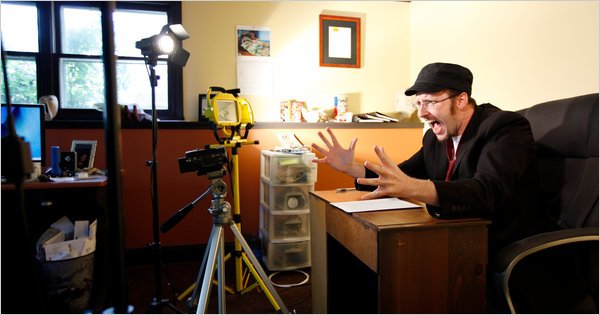NEW YORK, May 2, 2011 – The use of video content to cover news stories by online media websites has jumped by a third in the last year to 85 percent according to the 2011 Web Influencers Survey (www.dssimon.com) by D S Simon.
All online media categories showed growth in the use of video footage except television websites which remained at 96 percent compared to 2010.
The third annual survey of web media companies, including sites run by television, radio, newspapers, magazines and web media organizations, reveals an increasing use of in-house as well as externally developed video content to support their online reporting.
Eighty-four percent of respondents indicated they use third-party created video in combination with in-house generated content; a three percent increase in the last year. Radio station websites led the pack with 94 percent use of externally produced video; followed by magazines (93 percent), newspapers (86 percent) and web media (80 percent). TV stations websites trailed other media with just 63 percent usage of externally developed video content; likely due to their repurposing of content developed for their over-the-air and cable broadcasts.
“The 2011 Web Influencers Survey illustrates the shift from textual or static communications to video communications by media websites. It appears that almost all forms of media have transformed themselves into online television networks,” said Douglas Simon, president and CEO of D S Simon, an integrated video production and distribution, broadcast PR and social media video firm. “It appears this trend will continue to accelerate given the response to our question of whether web media companies planned to increase their use of video footage. Nearly four-fifths of respondents indicated they would use more or much more video in 2011 than they did in 2010.
“Given the high percentage of video accepted from external sources, this should prove to be a significant opportunity for companies, brand marketers and public relations firms to help these media outlets with relevant and quality video footage.”
Other key findings in this year’s Web Influencers Survey include:
· Media websites are overwhelmingly looking to monetize their sites: Eighty percent of media sites indicate they are now selling advertising on their websites with magazines leading the group at 90 percent, followed by newspapers (89 percent), radio (85 percent), web producers (78 percent), bloggers (72 percent) and TV (65 percent).
· Nearly half (47 percent) of media websites now offer a mix of advertorial, product placement and paid content: The survey found that in addition to paid advertising, media site owners are looking toward brand integration opportunities to raise additional revenues. Magazine sites were most aggressive in this area (68 percent), followed by radio (50 percent), web producers (47 percent), newspapers (45 percent), bloggers (40 percent) and TV (31 percent).
· Earned media on a website generates more value than just the initial placement: Video content placed by companies and public relations agencies on a website have an increasing chance of being syndicated to other websites. The likelihood of content being shared last year was 43 percent; in 2010; 41 percent of responds indicated they were likely to share video content; and in 2009, just 35 percent indicated they were likely to do so. Newspapers, at 63 percent, were the most likely media website to share content with other sites.
· Media sites prefer completed videos to other video content: Site owners preferred fully produced videos (57 percent) first; b-roll footage (49 percent); and sound bites last (47 percent). Variations by media type were dramatic with TV sites almost universally preferring b-roll footage (98 percent) compared to newspapers who cared little about b-roll (29 percent) but much preferred completed videos (71 percent).
·
The Web Influencers Survey, now in its third year, consists of an online survey delivered by Survey Monkey to more than 1,000 web media influencers. Individual surveys were sent out to TV, radio, newspaper, magazine and web media (producers; bloggers) properties.



